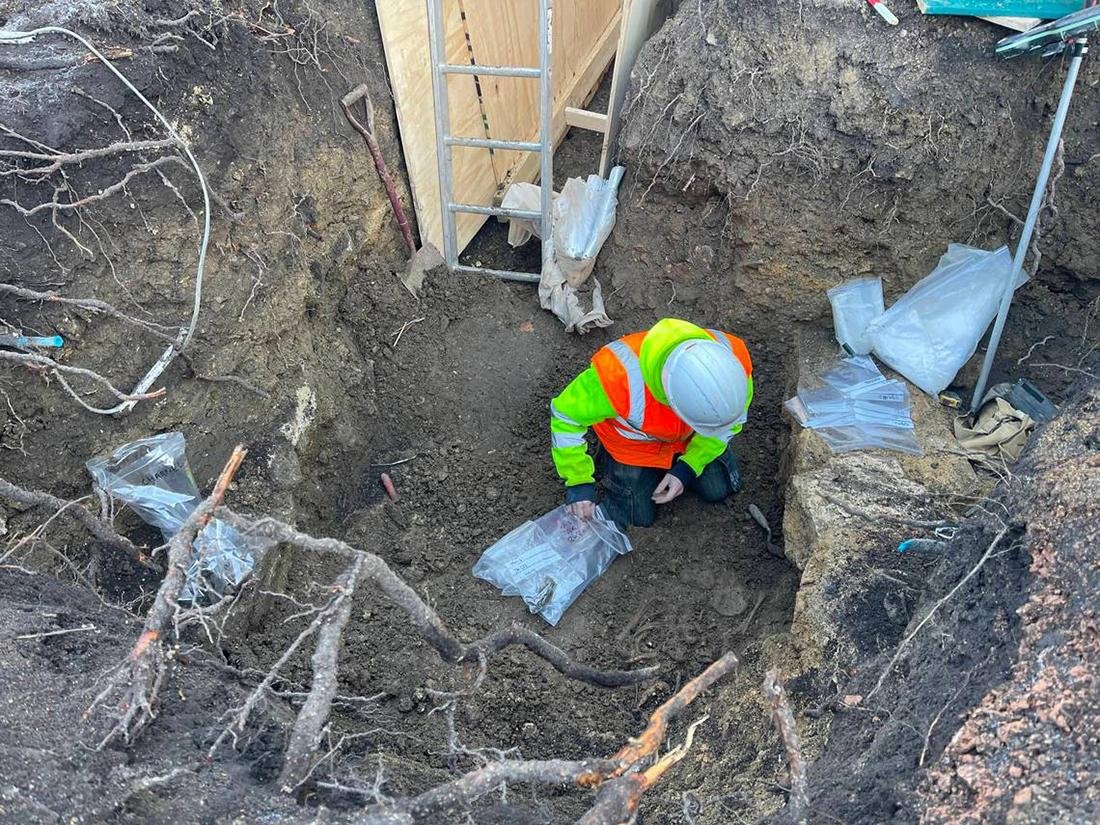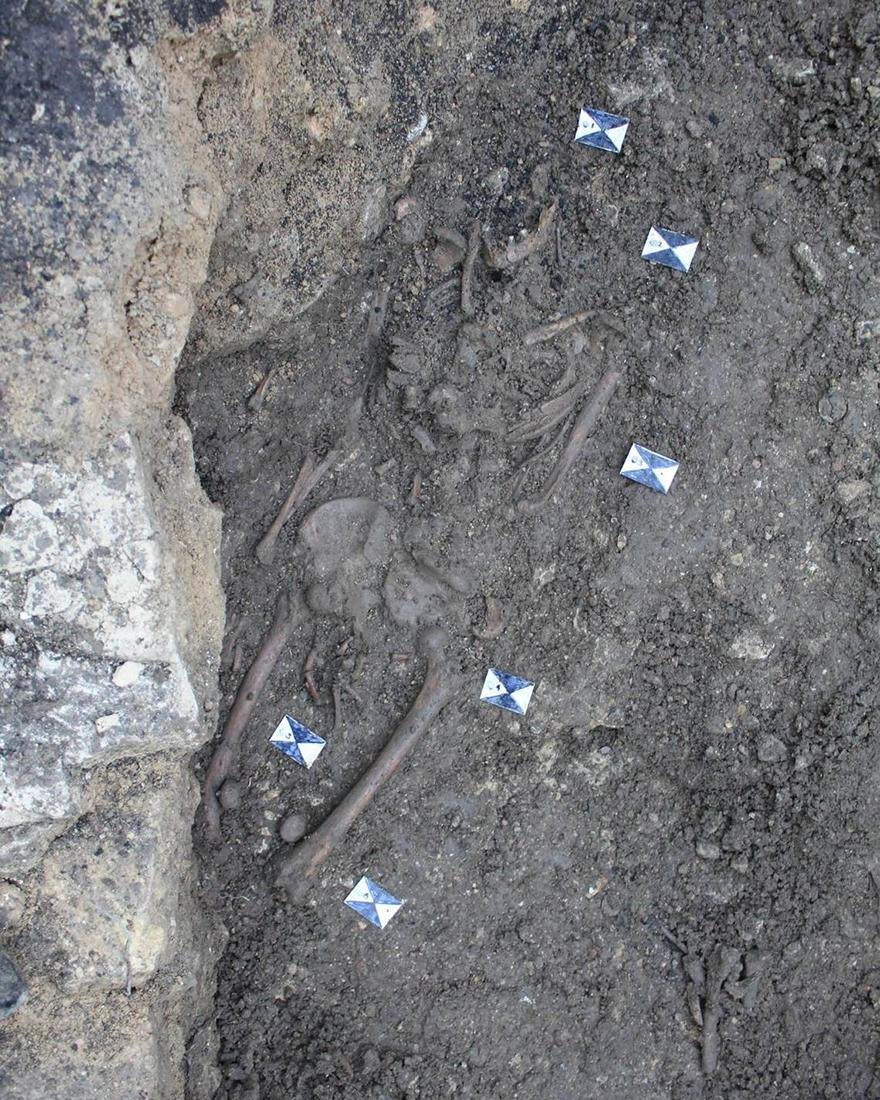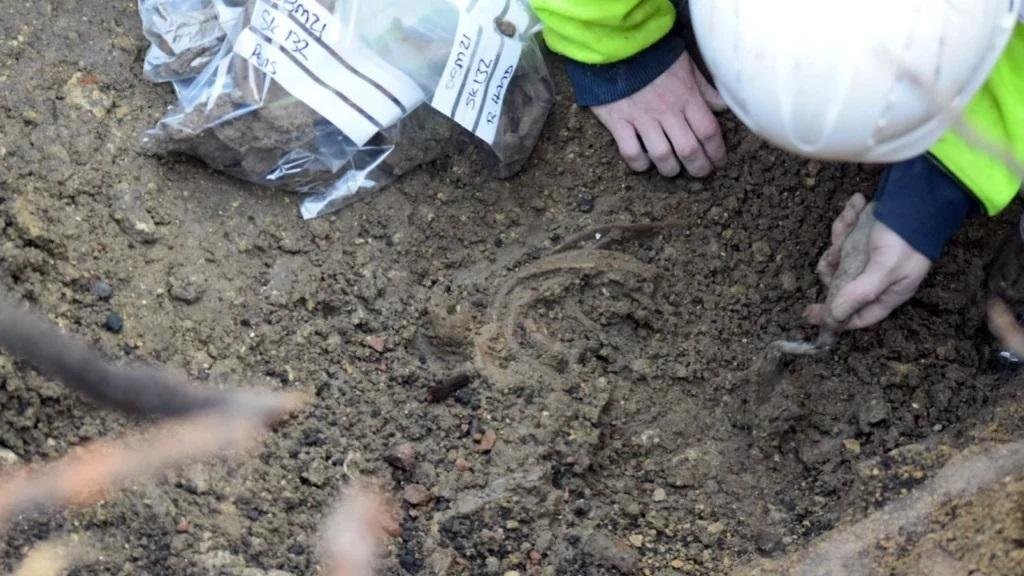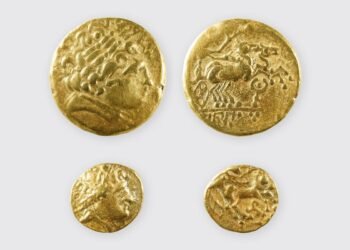Archaeologists have discovered a cemetery on the grounds of The Old Bell Hotel in Malmesbury, Wiltshire, England, dating back over a thousand years. This excavation has uncovered the skeletal remains of 24 individuals.

This find provides the first confirmed physical evidence of the early monastic community associated with Malmesbury Abbey, one of the most significant centers of learning in Western Europe during its peak.
The Old Bell Hotel, a historic building dating back to 1220, is situated adjacent to Malmesbury Abbey, a former Benedictine monastery founded around CE 676 by the scholar-poet Aldhelm. The abbey, dedicated to Saint Peter and Saint Paul, is a site of considerable historical importance, housing the burials of notable figures such as Máel Dub, who established the first monastic community in Malmesbury, and Æthelstan, considered by many as the first king of England. It is also believed to be a potential site where the Anglo-Saxon poem Beowulf was transcribed.

The excavation, conducted in 2023 ahead of a construction project, was part of the Big Athelstan Dig, a community archaeology event celebrating the 1100th anniversary of Æthelstan’s crowning. This event has unearthed not only skeletal remains but also associated grave goods, dating from CE 670 to 940. These discoveries offer invaluable insights into the early days of Malmesbury Abbey, which emerged as a leading center of academic learning and scholarship under abbots such as Aldhelm, John Scotus Eriugena, Alfred of Malmesbury, and Aelfric of Eynsham.

Tony McAleavy, a historian and local resident said: “This discovery literally transforms our understanding of the birth of Malmesbury Abbey in the seventh and eighth centuries. What we’ve got here is not a collection of the bodies of monks – it’s men, women, and children. It looks like we’ve found traces of the community of people who helped the monks here.”
Paolo Guarino, Assistant Publications Manager and Malmesbury resident noted: “We knew from historical sources that the monastery was founded in that period, but we never had solid evidence before this excavation. The discovery includes remains from the Middle Saxon period, marking the first confirmed evidence of 7th to 9th-century activity in Malmesbury.”

The excavation has not only confirmed historical accounts but also provided physical evidence of the settlement that predates the construction of the abbey. According to Alex Thomson, the project manager, “The finds represent the first confirmed evidence of 7th–9th century CE activity in Malmesbury. It suggests that the burials were potentially associated with the early establishment of the neighboring Benedictine monastery.”
The owners of the Old Bell Hotel, Kim and Whit Hanks, said in a release: “We are honored to act as stewards of local history, a responsibility we take very seriously. This exciting discovery intertwines history with the present, providing a rare insight into the lives of Middle Saxon period Malmesbury residents.”























Disclaimer: This website is a science-focused magazine that welcomes both academic and non-academic audiences. Comments are written by users and may include personal opinions or unverified claims. They do not necessarily reflect the views of our editorial team or rely on scientific evidence.
Comment Policy: We kindly ask all commenters to engage respectfully. Comments that contain offensive, insulting, degrading, discriminatory, or racist content will be automatically removed.
It’s AD & BC.
Are you afraid of acknowledging Jesus Christ.
He will be around , long after your gone.
Western Civilization is Christian.
Whether you like it or not.
Dear Arturo,
Thank you for your comment. We adhere to the widely accepted academic conventions for dating, such as BCE (Before Common Era) and CE (Common Era). This system is commonly used in academic and scientific publications worldwide. We respect all beliefs and recognize that our content is for a diverse, global audience, spanning from East to West. Our goal is to provide information that is accessible and relevant to everyone, regardless of personal or cultural background.